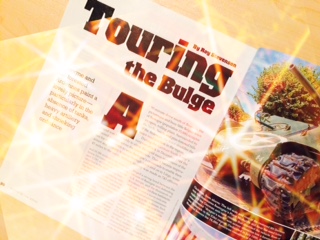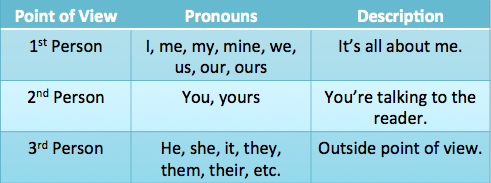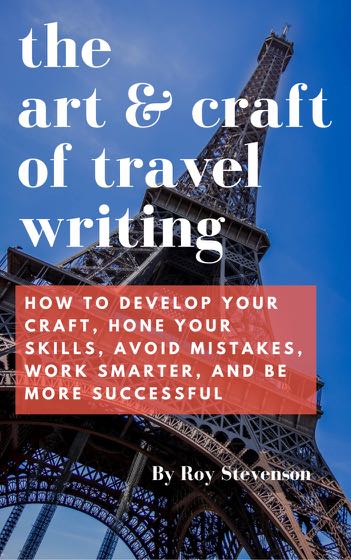- Home
- Travel Writing Craft Resources
- Improve Your Writing Style
Your Travel Writing Style:
Seven Ways to Improve It Fast
By Roy Stevenson
My writing style mistakes make me cringe when I look back at stories I wrote in my first couple years as a freelancer. Maybe it’s just an awkward paragraph that stands out. Or the story just doesn’t flow. Maybe the sentences are too long, or the words could be stronger.
Have you had the same experience? When you look back, it’s amazing how the mistakes are so glaringly obvious.
If you want to grow into higher paying and more prestigious publications, the one thing you must do is continuously improve your writing.
If you keep writing frequently and getting published, you learn a lot over time. But letting your writing style improve naturally takes a long time.
 Are there things you can do right now to improve your writing style and get published in better magazines? You bet there are!
Are there things you can do right now to improve your writing style and get published in better magazines? You bet there are!What if you don’t want to wait?
Are there specific things you can do NOW to jumpstart your progress and make every story sparkle?
Even if you’re a beginner, there are plenty of things you can do. And they don’t need to be difficult or take a lot of time to learn.
Try these seven ways to polish your articles, improve your writing style, and make your readers - and editors - keep coming back for more:
1. Aim for Rhythm and Flow
Generally, your travel writing style should move with an easy rhythm and flow from one subject to the next.
When proofreading your article, listen for the ‘rough spots’ - the words and sentences that trip you up and slow you down. Then eliminate them, replace them, or smooth them out.
2. Print Out Your Article and Read It
When you’ve completed your first draft, print out the article and read from the printed page. You’ll be amazed at how much more detail you pick up off the printed page than the computer screen.
For some reason our eyes miss a lot on the screen. We tend to scan on-screen so we miss typos and words used incorrectly. In print we catch these errors more easily. We are better able to interpret the depth and meaning of the words.
Some people also like to read their article out loud to help identify awkward transitions, long sentences and the “rough spots” I mentioned above.
“Hearing” the article instead of just seeing it adds another dimension to improve the words.
3. Vary the Length of Your Sentences
There’s nothing more boring than a bunch of sentences of the same length. They become monotonous.
Vary the length and structure of your sentences. Some should be short. Very short. Others should be longer, and go into more detail without losing the reader.
(The preceding paragraph has 6 sentences with 13, 3, 8, 4, 2 and 13 words. Now, that’s variation).
Sentence length is a fun and easy thing to monitor. After a while you’ll get very good at it.
4. For Best Writing Style - Use Short Words
Travel writing is not literature. Write your story as if you are in a pub, talking with someone over a couple of beers.
We don’t use long words when we talk. Write as if you are talking.
5. Delete Unnecessary Words
And while we’re talking about using shorter words, how about eliminating some words?
Here are common culprits that can often be removed:
- Extraneous modifiers, such as “very” and “really”. These are empty adjectives and can be deleted or replaced with more descriptive words.
Clauses such as “that” clutter your sentences, adding nothing but hot air.
For example, look at this partial sentence:
“if you’re telling a story that is full of interesting characters…”
vs.
“if you’re telling a story full of interesting characters…”
Removing “that is” from this sentence improves it. You're tightening up the story.
6. Include Dialogue
Always try to splash some dialogue into your story. It livens it up and provides a human layer.
Dialogue can be used to convey better information about the culture, attractions, and history of the place than straight narrative can.
A common question is, “Should I include the exact quotes and dialogue that were used in our conversation?”
If you managed to record the conversation, use it verbatim if it’s relevant. But conversations often wander, so it’s okay to paraphrase the conversation. Take the opportunity to smooth it out, tighten it up and make it easier to read.
7. Write Your Article in Second or Third Person Point of View
You might think that as a travel writer you would write in the first person because you were there. That’s not usually the case.
Your travel article is not about you. It’s about transporting your readers to a place so they can experience it through your words - and maybe be inspired to go there.
Most journalists write their articles in the second or third person. They do this to make the story more objective. And, to avoid being the centerpiece of the story.
It's easy to figure out what point of view the story is written in - just look at the pronouns:

First Person is the writer’s point of view. Pronouns include I, me, my, mine, we, us, our, ours. It’s all about me, me, and me, or me and whoever is with me.
Here’s an excerpt from one paragraph in a published article:
“I first visited …. I spend most of my time … I also keep an apartment … where I spend 3-4 months a year.”
Second Person is directed at the reader. Pronouns are you, yours. Use it when you’re talking directly to your readers.
If you’re giving travel tips to someone about a place, you might use second person:
“Begin your day in the golden triangle of art in the city… you can spend all day doing nothing but masterpiece gazing.”
Third Person is an outside point of view. Pronouns are he, she, it, they, them, theirs, etc.
Here’s an excerpt: “It’s a village ski resort in it’s truest sense … more advanced skiers can sharpen their skills…”
----
It’s sometimes appropriate to use first person very briefly to put yourself in the place before moving into the second or third person for the rest of the article.
Or, if you’re telling a story about a trip filled with interesting characters and you happen to be one of the characters, then first person is appropriate. The story might not read as well if you told it with a different viewpoint.
Most importantly, it’s publication dependent.
For example, International Living Magazine publishes a lot of stories in the first person. They want people to talk about their own experiences living overseas.
Before you submit an article to an editor, look carefully at the magazine and see what writing style viewpoint is predominant in the articles.
---
Much of your writing style improvement comes with experience after writing dozens (or hundreds) of articles. Don’t despair if you’re a beginner and your writing is clunky. You’ll get better and faster with practice.
If you try these seven tips to improve your writing style, you’ll find your writing will improve dramatically.
Related articles that will interest you:
Using Readability Statistics to Improve Your Writing
Your Travel Writing Craft Resources
The Complete Guide to Query Letters for Travel Writers eBook
Do you struggle to craft an engaging story,
and wonder how to get past this barrier?

There are many tools and techniques you can learn. And they're not difficult!
If
you’re prepared to work on your writing style and make improvements,
you’ll get your stories published in highly respected, paying
publications.
The Art and Craft of Travel Writing is a handy reference with tips and techniques to help you.

Roy Stevenson is a professional travel writer and the author of www.PitchTravelWrite.com. Over the past ten years, he’s had more than 1000 articles published in 200 magazines, trade and specialty journals, in-flights, on-boards, blogs and websites and has traveled on assignment around the U.S. and to dozens of international destinations.
IF YOU ENJOYED THIS POST, GET UPDATES. IT'S FREE.













